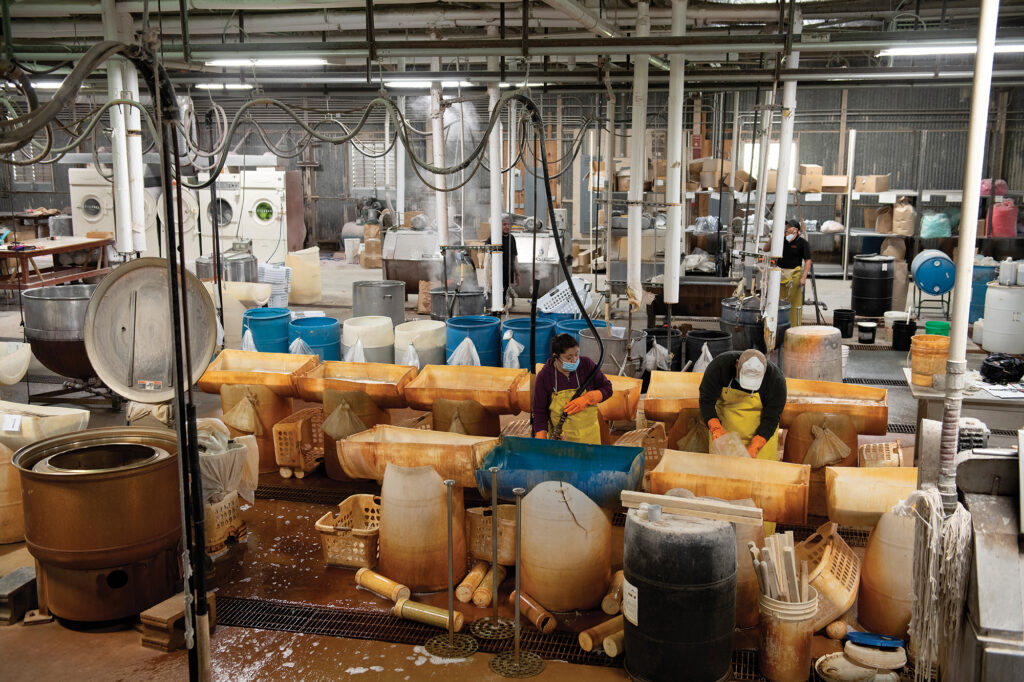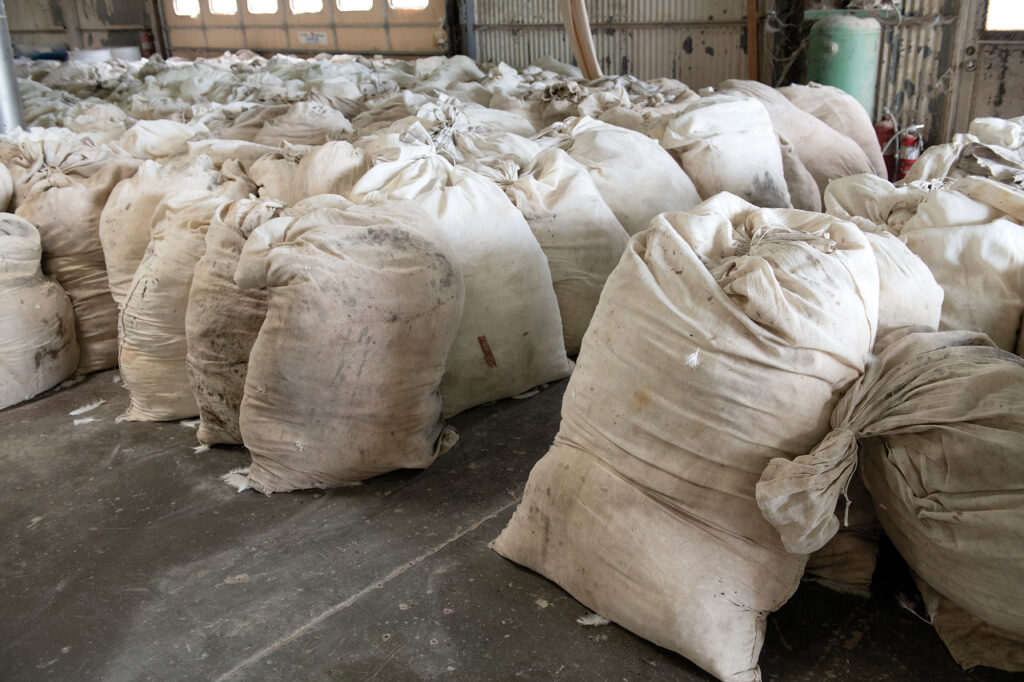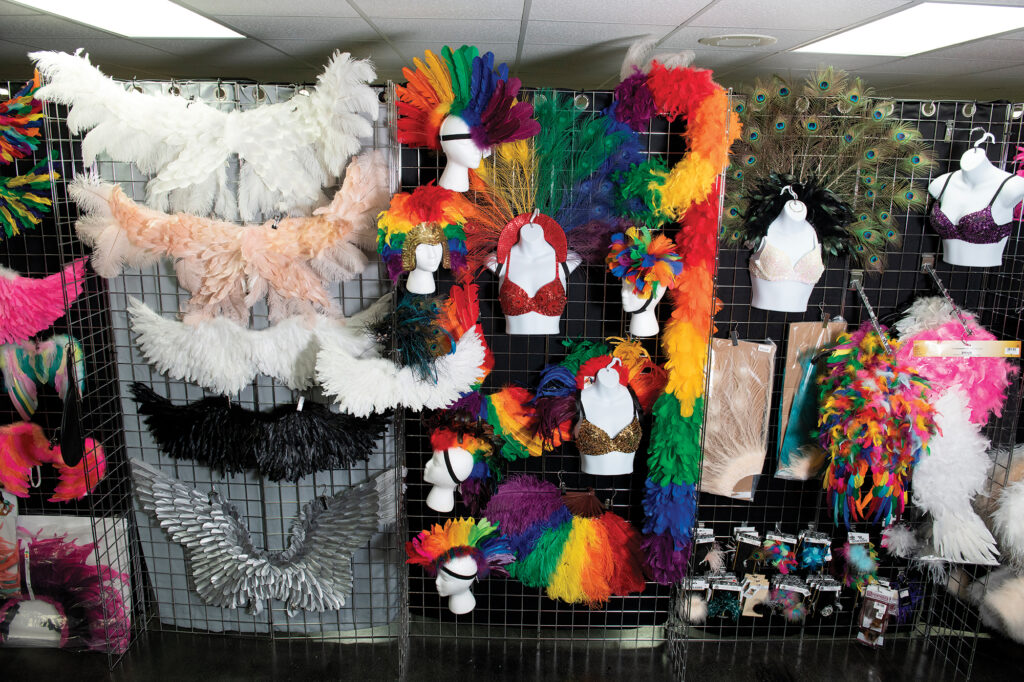
Flying High
June 21, 2024
Written By Jason Jenkins
Third-Generation Family Feather Business Roosts in California, Mo.
When life gives you lemons, you make lemonade. But what about when life gives you feathers?
You start a company and let it soar to new heights.
What began as a side business in a family’s basement more than seven decades ago has today become one of the largest U.S. suppliers of wholesale and retail feathers and feather products.
Based in California, Mo., Zucker Feather Products and its sister companies furnish feathers for seemingly every facet of life—from function to fashion. Led by the third-generation owners Abby Arauz-Chase and her brother, Anthony Arauz, the business has 70 employees at locations in three states providing feathers that grace everything from the Broadway stages of New York City all the way to the soundstages of Hollywood.
“I don’t know if my grandma and grandpa could have ever imagined how much fun we’re having now with everything they started all those years ago,” Abby said.
Opportunity Takes Flight
The family’s feather journey began with Abby’s grandparents, John and Minnie Dick, who operated a hatchery in the 1940s. As they developed relationships with inspectors at turkey-processing plants, they recognized an opportunity.
“Back then, the plants were just throwing the feathers away, so my grandparents collected them and brought them home,” said Abby, explaining how the Colfax Feather Co. began. “They literally used their washer and dryer to clean the feathers, then they’d dye them different colors and sell them to fly fishermen. My grandpa also cut fletching for arrows.”
Abby recalls taking trips with her grandparents in the summer to fly-fishing destinations such as Yellowstone National Park and Jackson Hole, Wyo., where John and Minnie would sell directly to anglers. In the 1960s, Colfax Feather relocated to California, Mo., where they were closer to more feather suppliers. In the late 1970s, they took up residence in the Heck Saddlery Building on the courthouse square where the business would continue to grow.
The couple raised two daughters—Abby’s mother, Donna, and her aunt, Dorothy—and both would find their own niches in the feather business. Donna met Abby’s father, Juan Arauz, while attending St. Louis University. Their careers took them to Fayetteville, Ark., where they opened Arkansas Valley Feathers and focused on the craft industry side, selling feathers to the likes of Hobby Lobby, Jo-Ann Fabrics and others.
“My parents eventually moved back to California and bought my grandparents’ business,” Abby said. “Then, in 1984, they purchased Zucker Feather Products, a company that had been in business in New York since 1872. That move expanded my parent’s business from anglers and crafts to all the other possibilities, including fashion, stage and screen.”
Abby and Anthony worked in the family business through high school before embarking on their own pursuits. A love of dance took Abby to New York where she’d reside for 20 years, spending about 10 years performing with the Radio City Rockettes.
“I really thought I’d never go into the feather business,” she said. “A lot of feathers are used on stage, so I started brokering deals with the different theaters and costume designers. That led to us opening a showroom in New York called the Feather Place in 1997, and then in 2007, we opened a second location in Los Angeles. However, the heart of the business is still here in Missouri.”
Today, the operation consists of three entities: Arkansas Valley Feathers, which handles the sale of washed and sanitized feathers to other feather businesses; Zucker Feather Products, which handles wholesale business; and the Feather Place, which handles retail sales.
Inside the Feathers Factory



Thumb through the Zucker Feather Products catalog, and it’s quickly apparent that the business of selling plumage is complex. Not only does the company sell feathers from many bird species—including duck, goose, guinea, ostrich, partridge, peacock, pheasant, rooster and turkey—but each bird also possesses several types of feathers in varying sizes. Terms such as quills, pointers, tails, flats, rounds and marabou are part of the vernacular, all describing feathers with different attributes and uses.
“Every feather we sell is a byproduct of another industry, so it’s kind of the ultimate in recycling and ‘upcycling,’” Abby said. “Of course, it’s different than when my grandparents started. Nobody’s just giving them away these days. We have contracts with processing plants to handle feather removal.”
A vast majority of the feathers that Zucker uses are turkey feathers. Bales of feathers are shipped from processing facilities to the Zucker dye shop on the outskirts of California, Mo., where they’re washed and sanitized. These “raw” feathers are then either sold to feather businesses or used to create the products that Zucker and Feather Place sell.



Once washed, the feathers can be dyed virtually any color in the rainbow. Abby said they maintain a library of both standard and customized color recipes.
“We’re able to exactly match the color of feathers dyed today with ones we dyed years ago,” she added.
Once a dye recipe is mixed, it’s dissolved into a solution using water and steam. Then, it’s mixed with more water in a commercial steam kettle to which the feathers will be added. After soaking long enough to achieve the desired color, the feathers are rinsed, spun and finally dried.
“Sometimes, we’ll bleach feathers to remove some of the natural color before adding the color a customer has requested,” Abby said. “It helps to make the colors more vibrant.”
Feathers for All Occasions
While Zucker still sells fly-fishing supplies and arrow fletching as Abby and Anthony’s grandparents once did and craft supplies as their parents did, the company’s offerings run the gamut from feather dusters to cat toys and everything in between. They sell feathered wigs, masks, boas, headbands, halos, headdresses and wings.
Once washed, the feathers can be dyed virtually any color in the rainbow.



“Halloween is a big season for us with costuming, but so are Mardi Gras and Carnival,” Abby said. “Feathers have been popular for wedding décor, and we’re also seeing more Christmas and home décor sales. Feather fashion also has become popular at festivals such as Burning Man and Coachella.”
Abby’s connections in New York and Los Angeles have led to their involvement not only on the stage but also in television and movies. They supply all the feathered props for “Saturday Night Live” and have played a role in the costuming for films such as “Maleficent,” “The Hunger Games: Catching Fire” and “Rocketman.” The company has also provided feathers that decorated the Metropolitan Museum of Art’s Met Gala benefit.
“We don’t necessarily always get the credit because we’re behind the scenes working with the designers, but it’s neat to just be part of it,” Abby said. “We try to be ready so that when a trend comes along, we can meet the need.”
Competition from foreign manufacturers and the growth in online sales have changed their business model over time, but the ability to innovate and customize orders keeps Zucker ahead of the pack, Abby contended.
“You really can’t replicate the natural beauty and iridescence of a feather,” she said. “They’re beautiful, and they make people happy. We take tremendous pride in what we do and the quality and customer service that we offer.”
For more information about Zucker Feather Products and the Feather Place, call 573-796-2183 or visit www.featherplace.com.

